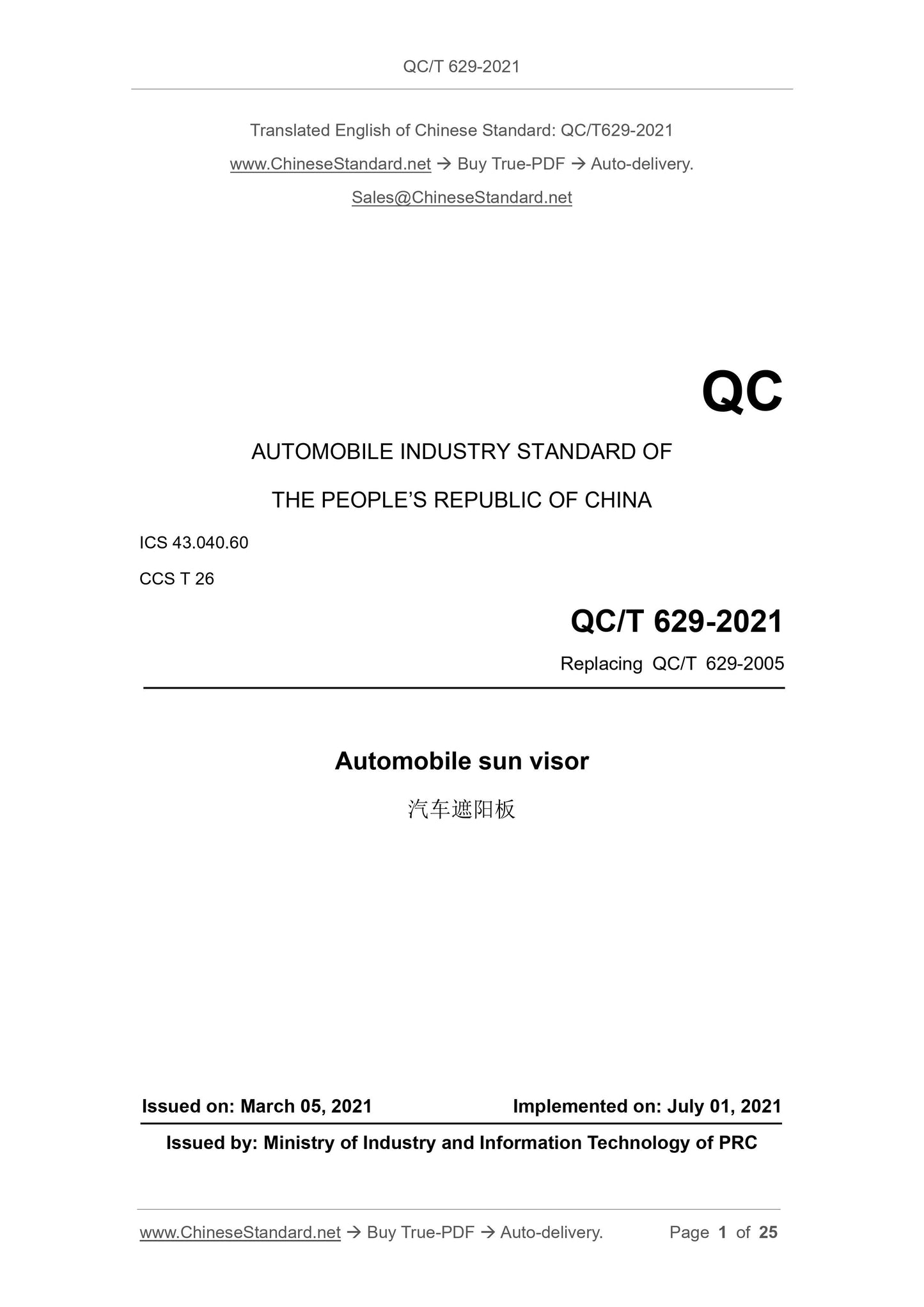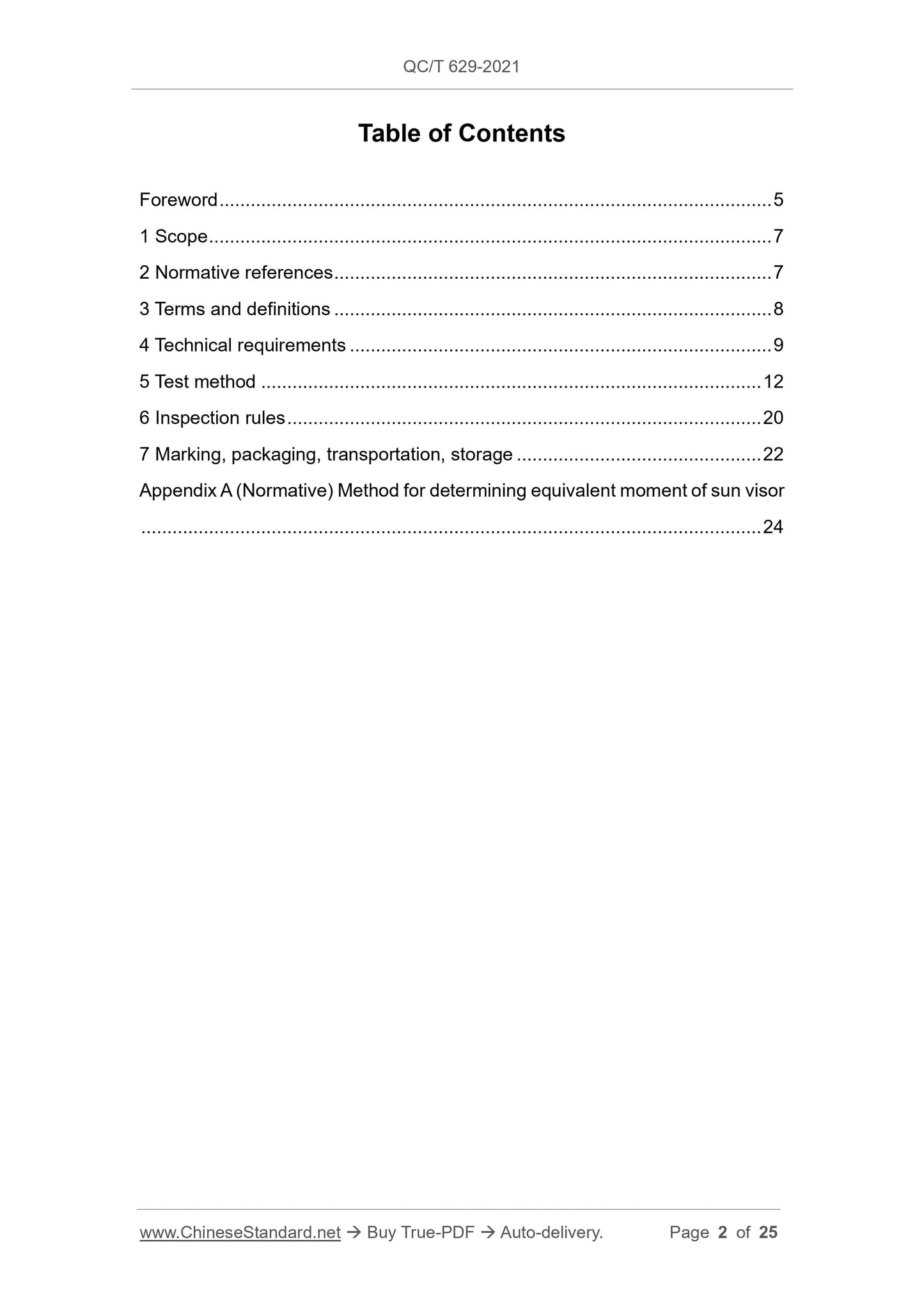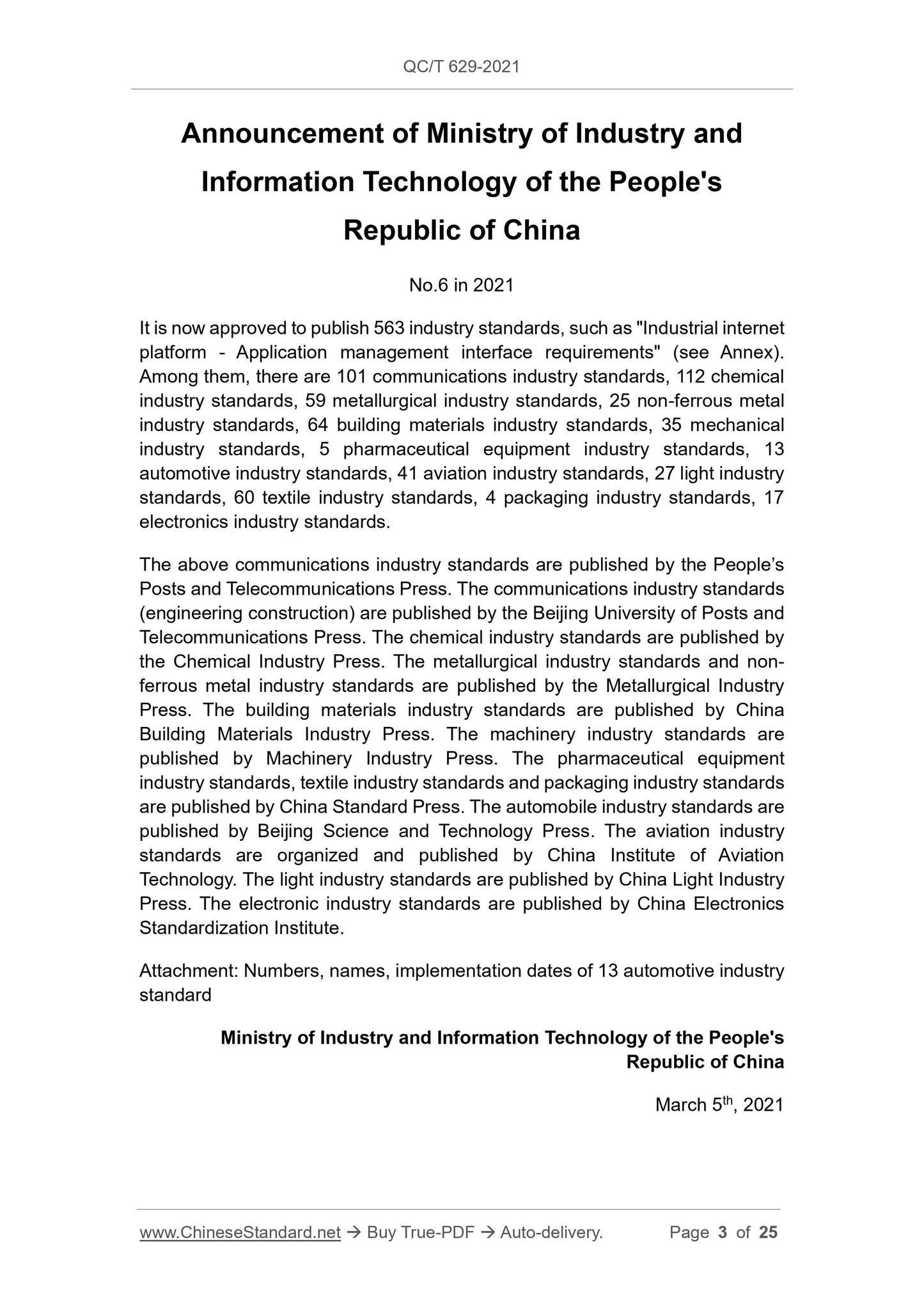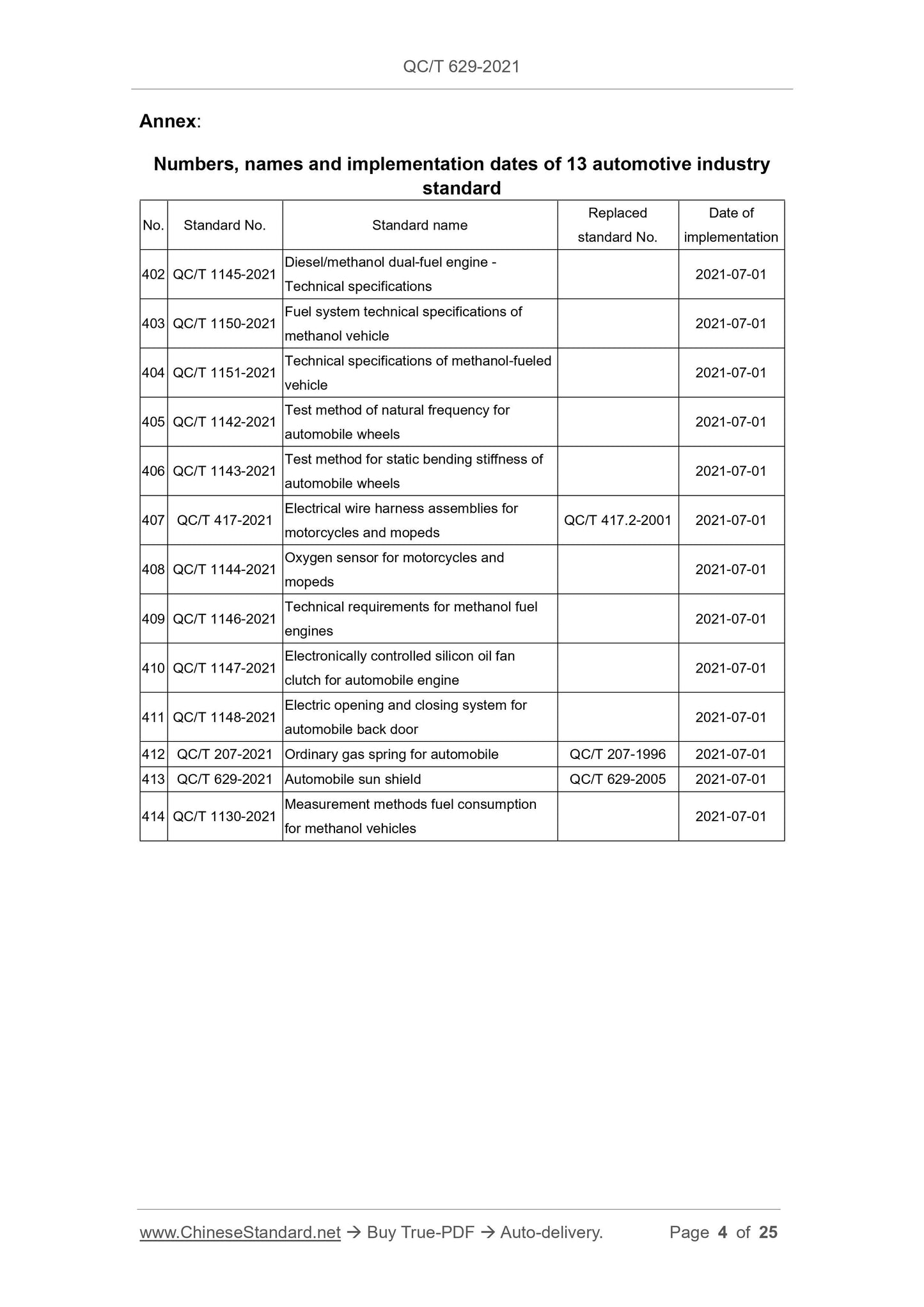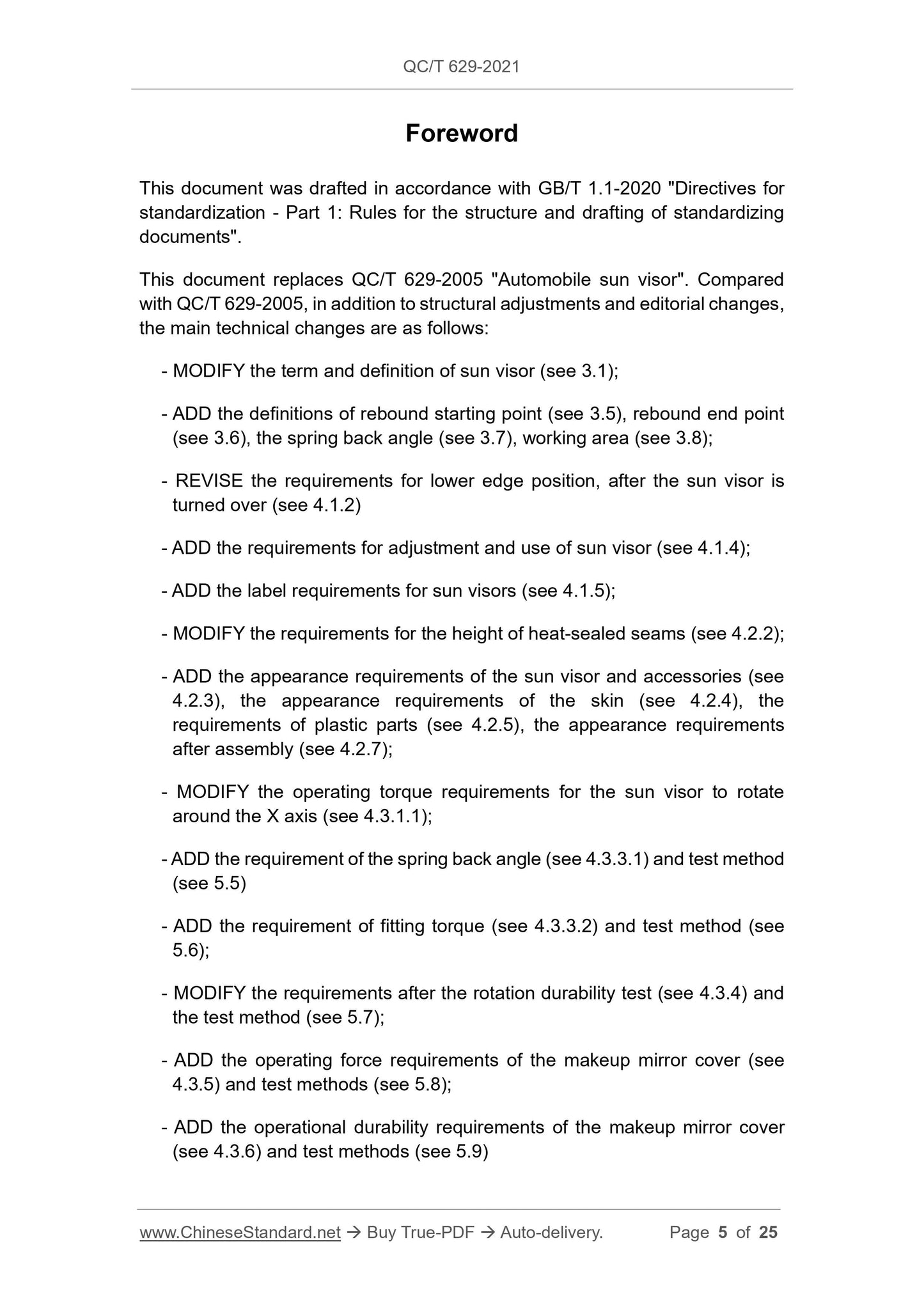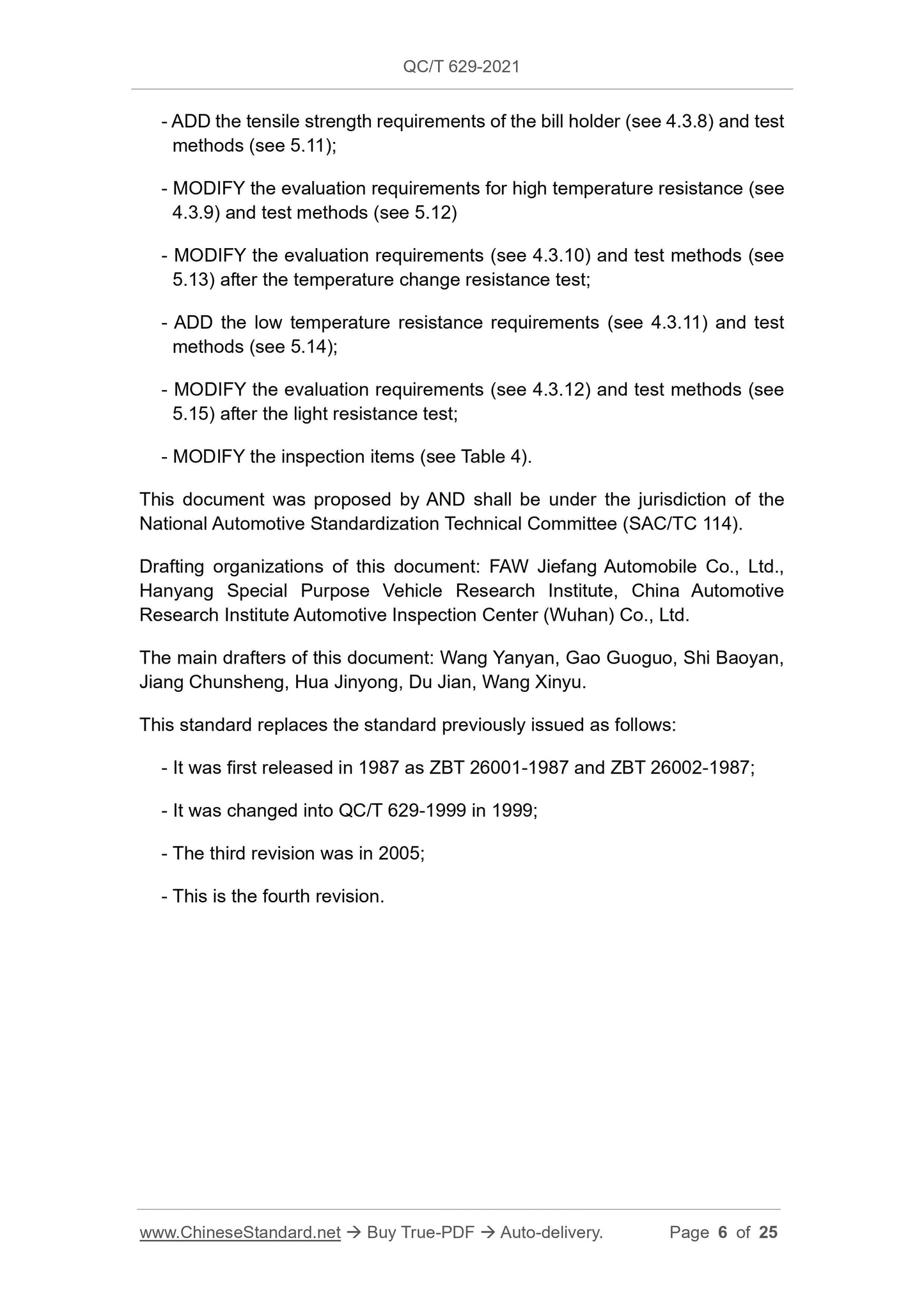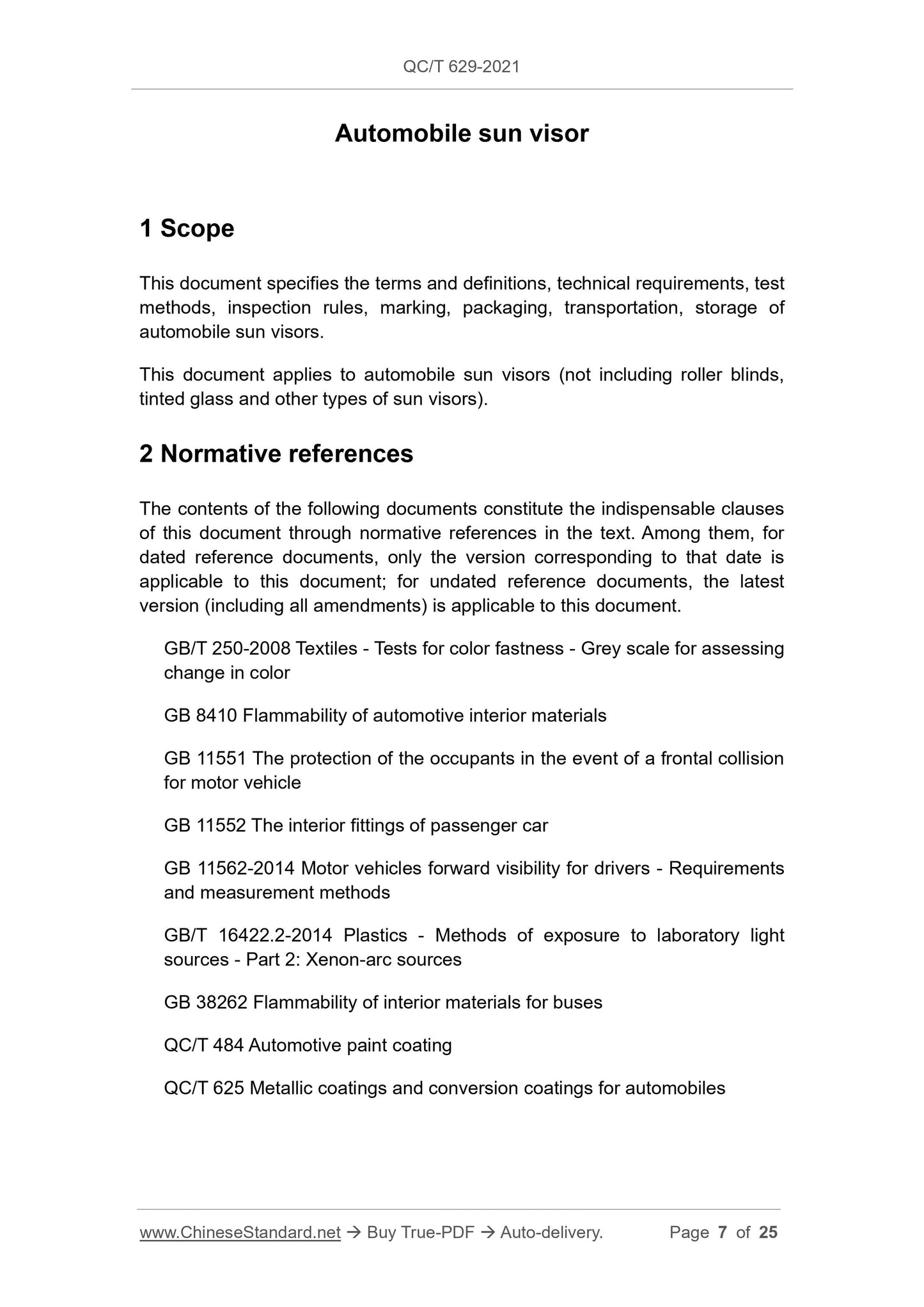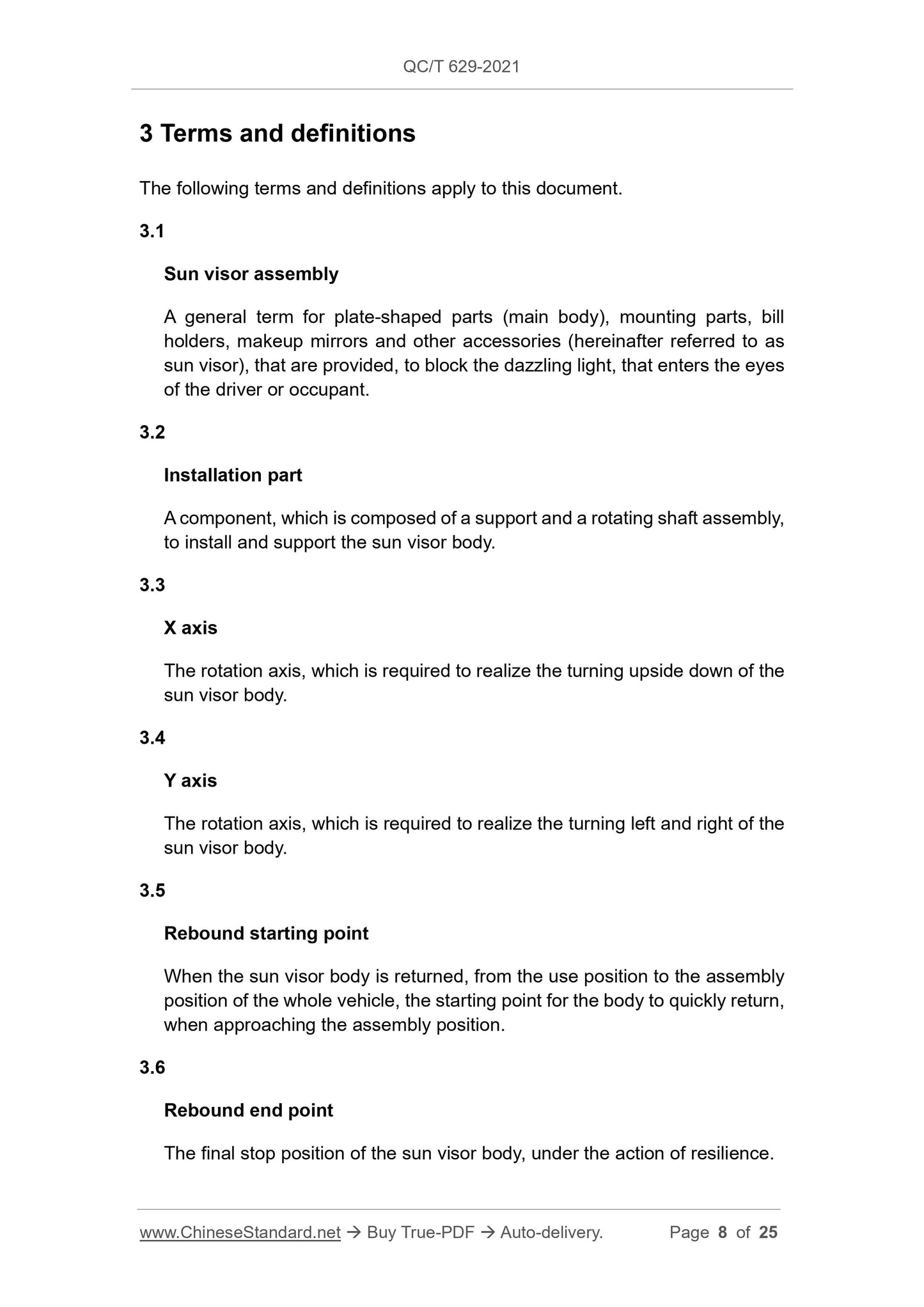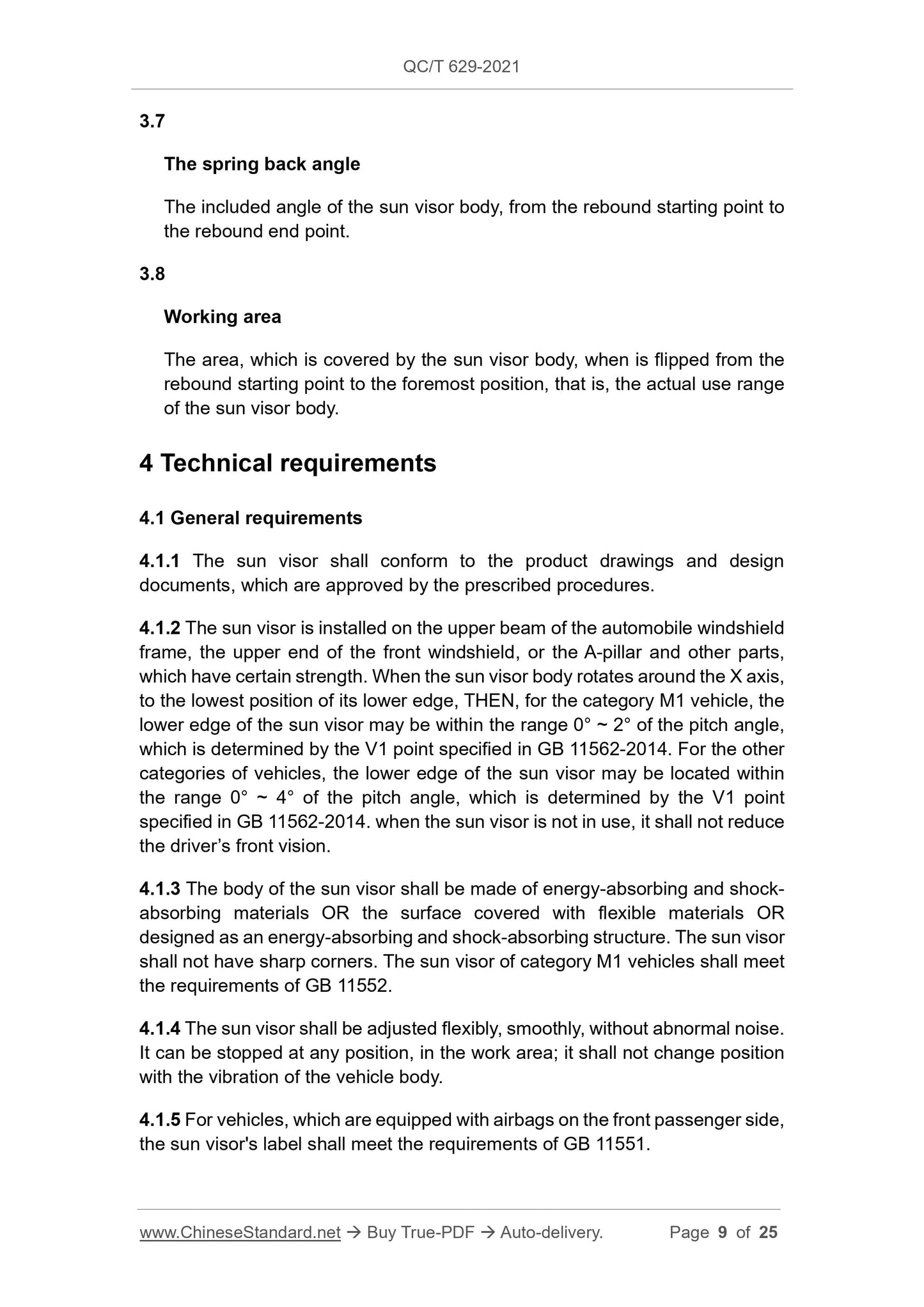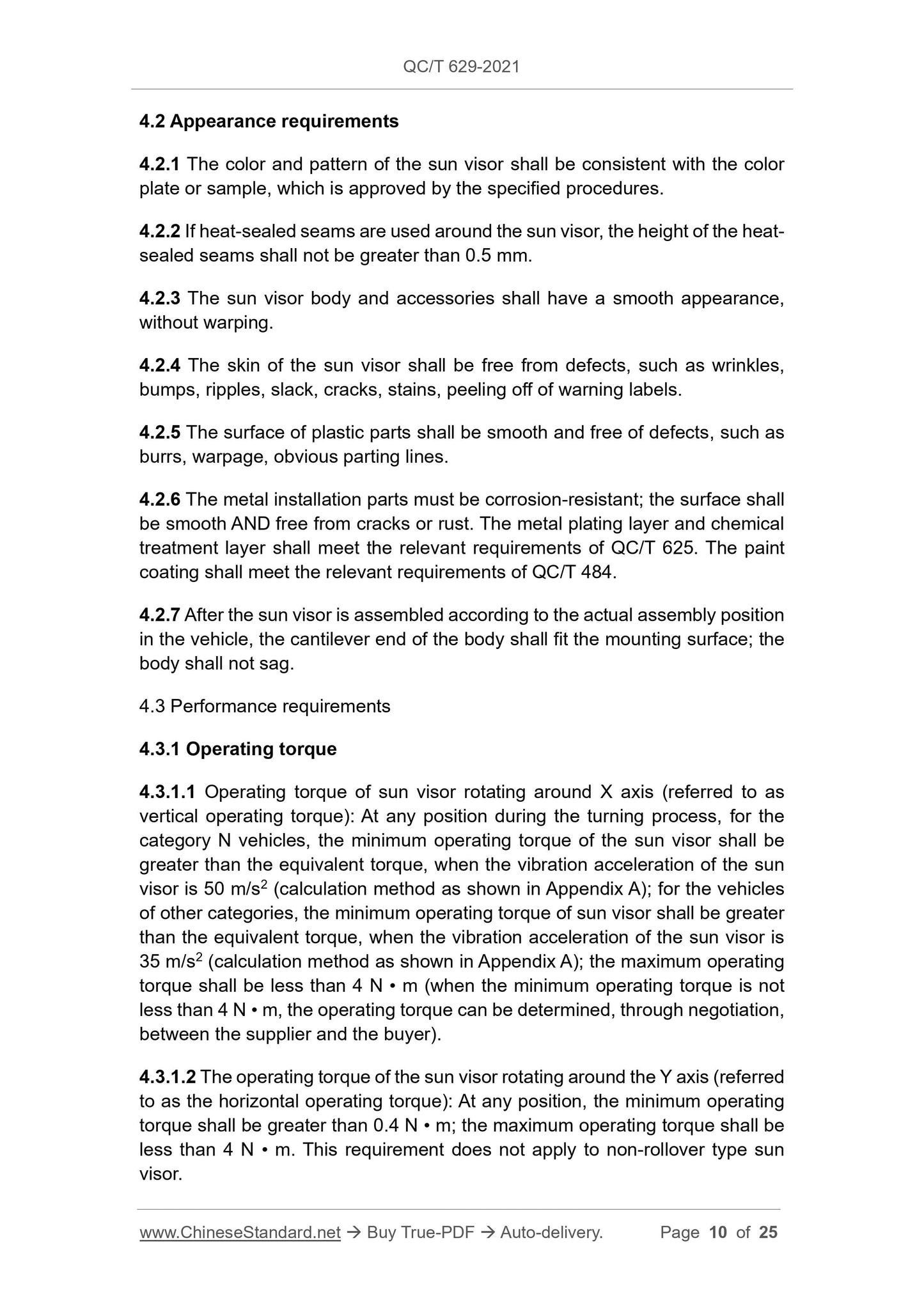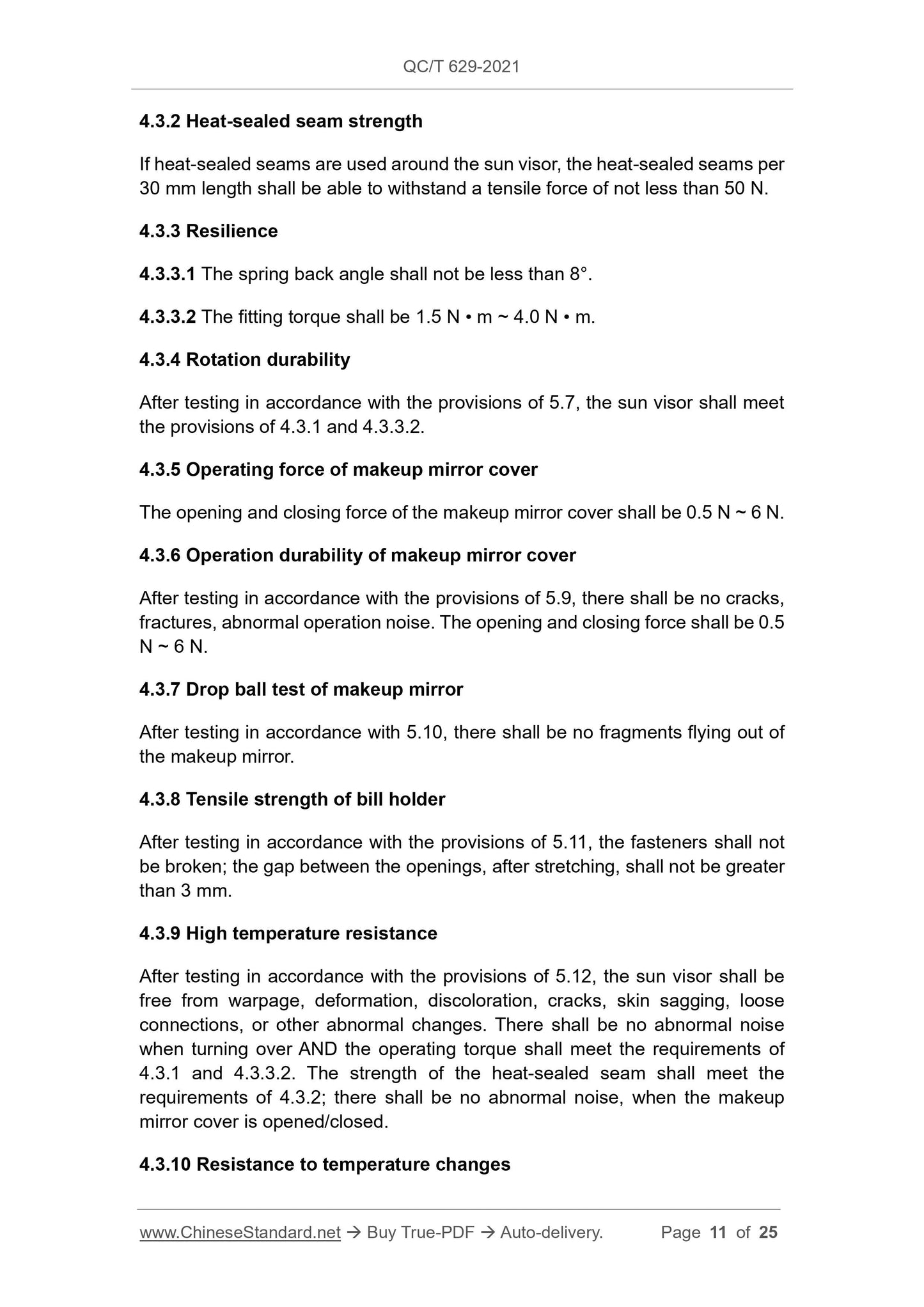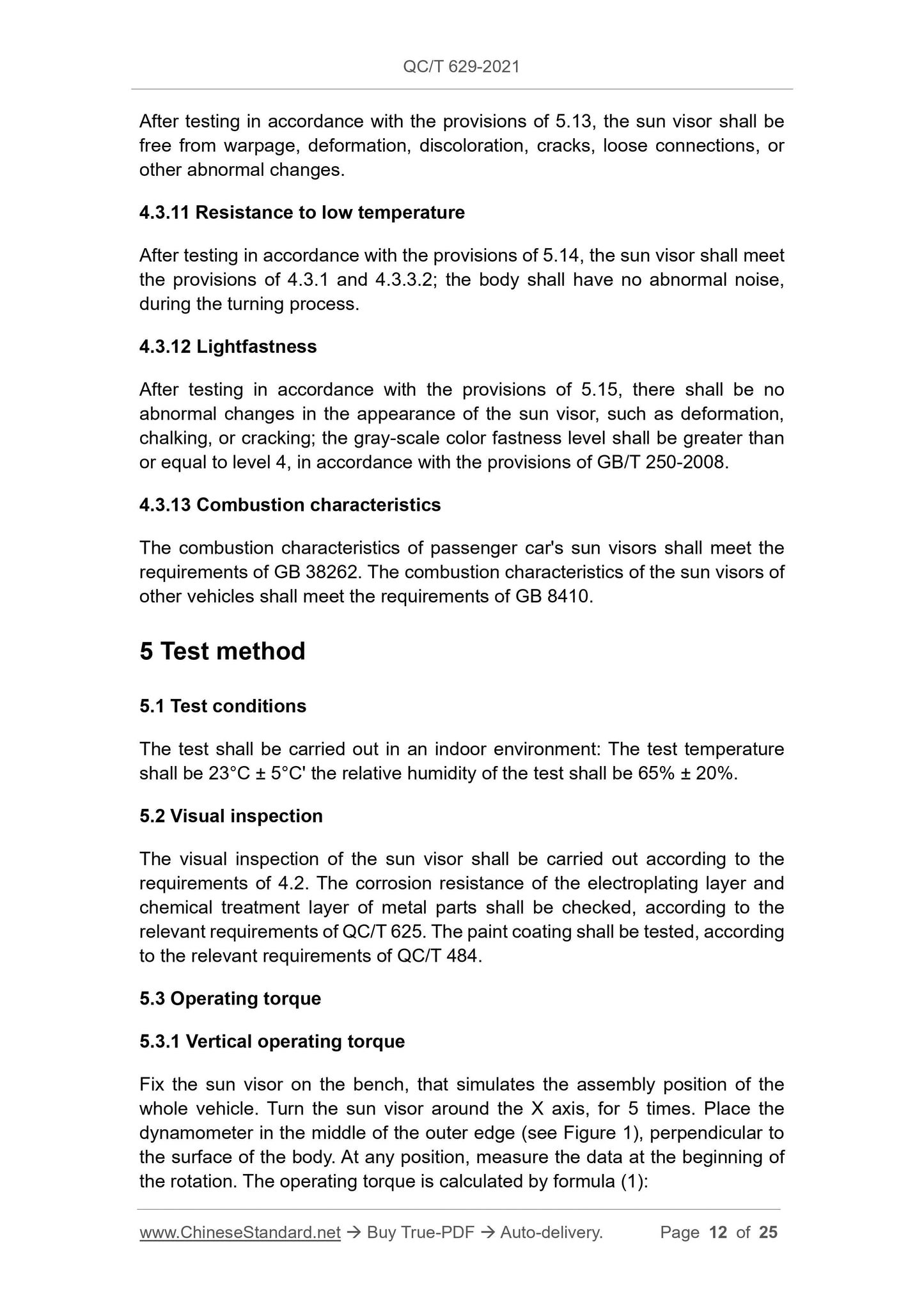1
/
of
12
www.ChineseStandard.us -- Field Test Asia Pte. Ltd.
QC/T 629-2021 English PDF (QC/T629-2021)
QC/T 629-2021 English PDF (QC/T629-2021)
Regular price
$275.00
Regular price
Sale price
$275.00
Unit price
/
per
Shipping calculated at checkout.
Couldn't load pickup availability
QC/T 629-2021: Automobile sun shield
Delivery: 9 seconds. Download (and Email) true-PDF + Invoice.Get Quotation: Click QC/T 629-2021 (Self-service in 1-minute)
Newer / historical versions: QC/T 629-2021
Preview True-PDF
Scope
This document specifies the terms and definitions, technical requirements, testmethods, inspection rules, marking, packaging, transportation, storage of
automobile sun visors.
This document applies to automobile sun visors (not including roller blinds,
tinted glass and other types of sun visors).
Basic Data
| Standard ID | QC/T 629-2021 (QC/T629-2021) |
| Description (Translated English) | Automobile sun shield |
| Sector / Industry | Automobile and Vehicle Industry Standard (Recommended) |
| Classification of Chinese Standard | T26 |
| Word Count Estimation | 18,165 |
| Issuing agency(ies) | Ministry of Industry and Information Technology |
Share
